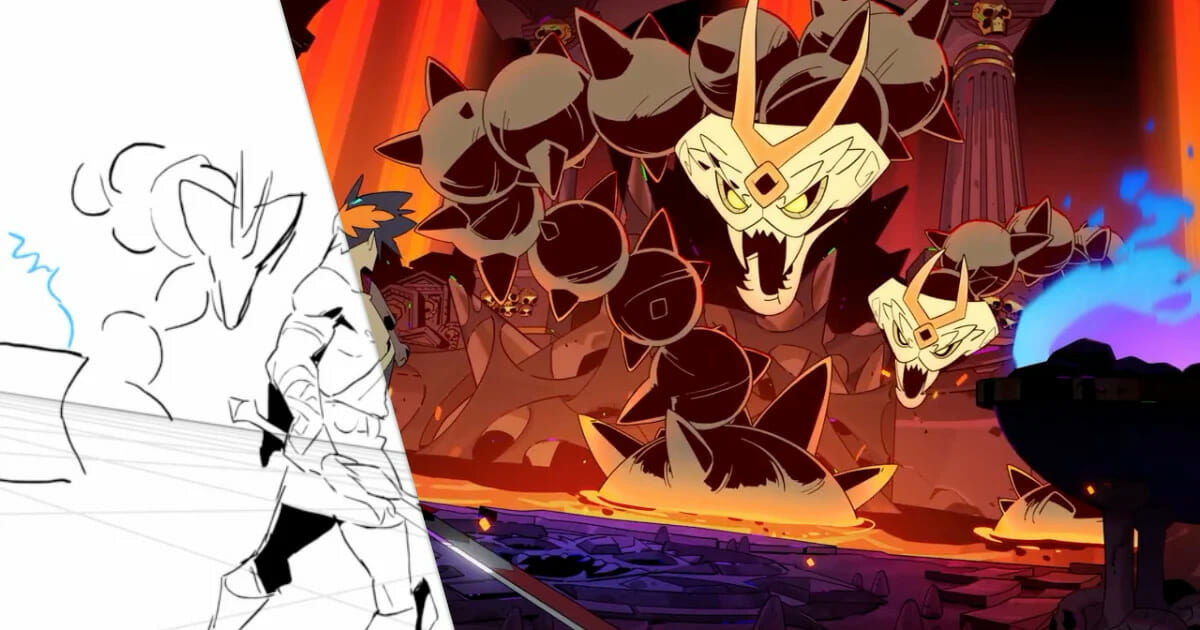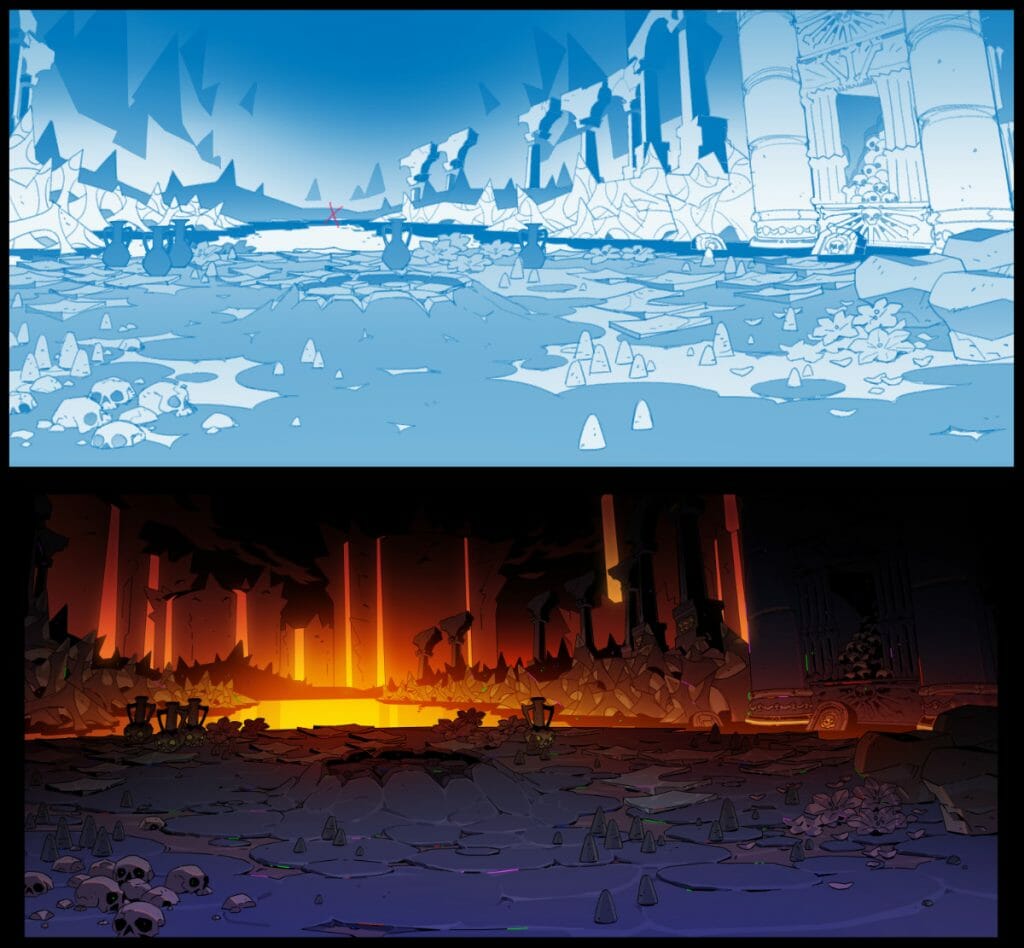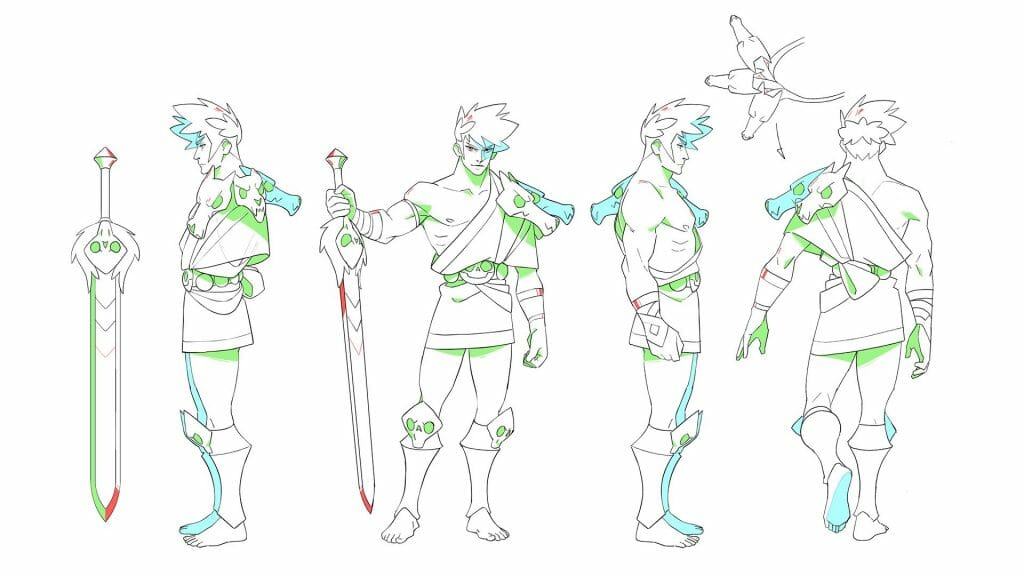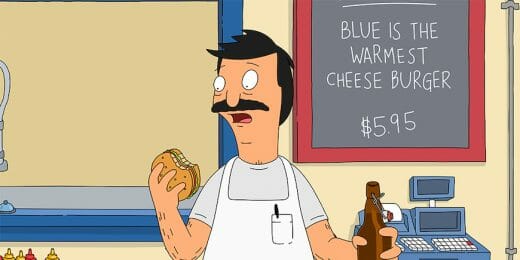
Spencer Wan is a deft hand at putting the action into the animated, with credits on Castlevania and now a breathtaking new trailer for Supergiant Games’ Hades under his belt. Fans of Hades, which could be described as a ‘roguelike hack-and-slash dungeon crawler,’ have been quick to praise the trailer’s action-packed anime treatment. With challenging combat featuring colossal characters, fire-breathing demons and lightning bolts, the trailer sets the expectation that the protagonist will be returning from the River Styx. Frequently.
Based on Greek mythology, the game sees you play Zagreus, a rebellious son of Hades who must fight his way out of the underworld with the help of a host of Olympian gods. To animate at such an epic scale, Spencer knew that he too would need to call on a pantheon of godly talents. He went about setting up a team, enlisting some of the most skilled animators from his network and bringing them under one banner: Studio Grackle.
We interviewed Spencer to hear what this process was like, and how he purpose built the team to meet Supergiant’s brief. He tells us about the storyboarding process, gives insight into how the vivid backgrounds were created, and highlighted work from some of Studio Grackle’s key personnel. Let’s meet the team which brought Hades to life.
Your trailer for Hades has fans excited. What was it like putting this project together, and what were the biggest challenges you faced on it?
Somehow the whole experience was shockingly smooth. Most of us had already worked with each other for years before coming together for this, so although it was our first project, our pipeline was able to function more like that of a more seasoned studio. Working with Supergiant was also a wonderful experience. I’ve never worked with a client so trusting and accommodating, and we were really able to do our best work with the freedom they gave us. The biggest challenge was just dealing with the conditions of the time. A global pandemic really puts a damper on your motivation for artistic pursuits, and makes managing a team a little more complicated.
Can you tell us about your storyboarding process?
I storyboarded this the old fashioned way, which is to say very quickly and loosely. Most storyboards you see out of larger studios these days tend to be very clean and very posed out, since they’re sending them overseas to be animated. We were doing all our animation here, so we didn’t need tight boards. I spent about twenty minutes scribbling out some thumbnails on the subway, drew a slightly more presentable version for Supergiant that night, it got approved, and we moved on.
I think the only thing really worth mentioning is that since I knew who I wanted my team to be, I boarded the scenes with each individual animator in mind. I gave them the option to pick which scenes they wanted, but to my surprise they each picked the exact ones I boarded for them.
The trailer contains very action-oriented fight scenes. What was the process to create these?
The majority of the team was already well-versed in action. Every one of the animators on this project had worked in anime before, and every one had animated fight scenes many times. It wasn’t so much of a process as it was just second nature for all of us. Knowing this, I made it a point to give as much freedom to the animators as possible. In the case of Chengxi Huang and Weilin Zhang, who animated the swordplay scenes, I handed them my boards and told them they could do whatever they wanted as long as they kept the staging the same. I didn’t even give Weilin any sort of design for the Zeus cloud, I figured his take would be thoughtful and interesting without it.
The colours in the scene are really vivid and violent. How did you go about achieving this richness?
That’s really to the credit of our background artist Jane Bak and the artists at Supergiant who created such lovely source material. The colors in Hades are strikingly unique, and I thought departing from them would be doing the game a disservice. Jane followed their color schemes very faithfully, and I simply laid the character on top and tuned the flat colors until they felt appropriate.
Were there any features of Toon Boom Harmony that you found particularly useful on the trailer?
The color palette in Harmony has always been useful for me on any project, but here where I was doing color adjustments to the character and FX animation on the fly, it was indispensable. Harmony’s flexibility with exporting image sequences was also useful. We use a compositing process similar to the anime pipeline, where the color art needs to be aliased on export, and a lot of programs don’t allow for it.

Congratulations on the founding of your studio! How did Studio Grackle come into being?
Initially Jen Zee, the art director at Supergiant, had reached out to me as an individual to create the trailer. We sorted out pretty quickly that because of California Assembly Bill 5, it wasn’t going to be possible unless I formed a business entity first. I jokingly said something like, “If I’m going through all that trouble, I might as well just hire a team and form a studio.” They seemed pretty open to the idea, so we just moved ahead with it. A couple months into working on the project I realized that what had started as a side gig was becoming something more serious for me, and now Grackle has become the focus of my career.
I’ve heard that that bill was amended recently to remove the restriction on working with individuals. If this hadn’t happened right when it did, Grackle probably wouldn’t have existed.
You source freelance talent from all over the globe. What is it about your team of animators that makes you want to hire them?
This time I almost exclusively selected people I’d worked with and who had worked with each other before. I thought it would be best to try and keep everyone as comfortable as possible for our first project. Past that it was just selecting people I thought would be best for the job.
With such a wide roster of talent at Studio Grackle, what hurdles have you faced bringing all those visions together?
The trickiest one was that each department was coming from drastically different pipelines. The animators had most of their experience in anime, Jane and Lauren were working at Disney TV, and Robby and Craig were with me at Powerhouse back in the day. I ended up mixing all of the pipelines they were most familiar with to create our pipeline, and allowed them to use whatever software they wanted to get the job done. It was a little extra work to unify everything on the backend, but a lot less than having to force everyone to learn a new process.
Are there any exciting projects coming up for the studio?
Yes, but I can’t talk about those yet!
You personally worked on Netflix’s Castlevania, what was it like working on the hit show?
It was probably the weirdest and most difficult project I’ve ever worked on. None of us really knew how to make a TV show, and basically everything on that production went wrong in every possible way. Deadlines were tight and tensions were growing higher every day. I’m sure at some point we all questioned why we were even doing this anymore.
If not for the talent and tenacity of that beautiful team of people brute forcing their way through every problem on that production, it would’ve been a horrifying failure. Looking back, I still have no idea how we pulled it off. Now whenever I get frustrated in my work I just take a deep breath and remind myself that at least it’s not season one of Castlevania.
Season two was so much easier that it’s almost entirely faded from my memory.
Similarly to Hades, Castlevania contains mythological monsters and demons. These look really hard to animate! Were there similarities in your approach to the two projects?
Actually, the creatures in Castlevania were a lot easier for me to animate than the characters were. I’ve always liked animating creatures because no matter what production I’m on, they’re always treated with far less scrutiny than the human characters. Hades was maybe similar in that I treated the Hydra with less scrutiny than Zagreus. It’s just easier to draw when no one is putting the microscope to it.
Of course, both of these titles are video games. What is it about certain video games that cross over well into anime?
I think it’s less about the specific games and more about the teams charged with adapting them. The Castlevania Netflix show in different hands might’ve been disastrous, but it was given to people who cared about Castlevania. It’s pretty easy to see what fans might want when you yourself are a fan, and I’d been a fan of Jen and of Supergiant since I was still a student. You never ask yourself, “How should I go about adapting this?” When you really care, the answer is usually obvious, and failure to do it justice would strike you so deeply and so personally that you’d never forgive yourself.

I’ve read you say that, as a gay man of mixed-race, diversity and inclusivity are huge for you and your studio. Do you have any thoughts you’d like to share on the state of diversity and inclusion in today’s industry?
I think in the American industry today, diversity tends to be a bit of an afterthought. No one has ever really gotten in my way because of my race or sexuality, but no one has ever sought me out for it. This is the first time anyone has even acknowledged that I’m a minority in animation, let alone asked a question about it. Of course my experience is unique to me, and if you look at the makeup of the industry it’s obvious that there’s a bias. I think when it comes to animation it’s more a systemic problem than a conscious effort to keep people out, but I think a lot of people agree we could do better.
Unless you make an effort to include, you’ll unintentionally exclude. That’s something I think many people in our industry could still take to heart, but I do think it’s getting better. I see more of a push for diversity than I ever have, especially from peers around my age, and we’ll continue to push. I definitely intend to with Grackle.
What parting advice do you have for animators trying to get into the industry?
I have three pieces of advice I give to everyone who asks this question.
First, don’t think only of landing a job. Focus on improving rather than trying to impress an employer, and hone your craft until you become so good at what you do that no one can deny you.
Second, post your work online. Loads of people hire off social media now. If you’re not making yourself visible, then you’re doing yourself a disservice.
Third, don’t be an asshole.

Interested in seeing more from the flock at Studio Grackle? You can follow Spencer and his team on Twitter, and contact them for opportunities through their official website.



